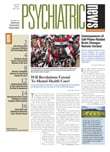It may be possible to identify some individuals who will develop a depression or an anxiety disorder in the near future, a Dutch study suggests.
The research was conducted by a psychiatric team at the University of Groningen; it was led by Julie Karsten, a doctoral candidate. Their findings appeared in the March British Journal of Psychiatry.
The study included 1,167 subjects from the general population, primary care sites, or specialty mental health sites. None of the subjects currently had an anxiety or depressive disorder, but some had had these disorders in the past. Some of the subjects had subthreshold symptoms for such disorders at the time of the study.
The presence of anxiety disorders or depressive disorders was assessed using the Composite International Diagnostic Interview, lifetime version. Subthreshold symptoms were identified with the Depressive Symptomatology Self-Report and the Beck Anxiety Inventory.
The researchers first tracked, over two years, how many of the subjects developed a depressive disorder (either major depression or dysthymia) or an anxiety disorder (social phobia, panic disorder, agoraphobia, and generalized anxiety disorder were the disorders considered).
Of the 369 participants who had baseline subthreshold depressive symptoms, 28 percent developed one or more depressive disorders, four times more than participants without subthreshold depressive symptoms. Of the 466 subjects with a history of a depressive disorder, 23 percent developed a depressive disorder (not necessarily the same kind as before), three times more than among those without such a history.
Of the 277 subjects who had baseline subthreshold anxiety symptoms, 26 percent developed one or more anxiety disorders, three times more than subjects without such symptoms. Of the 321 subjects with a history of an anxiety disorder, 21 percent developed an anxiety disorder (not necessarily the same kind as before), almost three times more than among subjects without such a history.
The researchers then examined the extent to which history, subthreshold symptoms at baseline, or their combination predicted the occurrence of a depressive disorder (a major depressive disorder or dysthymia) or an anxiety disorder (social phobia, panic disorder, agoraphobia, or generalized anxiety disorder) over a two-year period, while taking possibly confounding factors—gender, age, years of education, and number of somatic illnesses—into consideration.
Not surprisingly, either a history of a depressive disorder or subthreshold depressive symptoms at baseline independently predicted a depression within the next two years. And when both were present, the risk was even higher than when only one was present.
Also not surprisingly, a history of an anxiety disorder or subthreshold anxiety symptoms at baseline independently predicted development of an anxiety disorder within the next two years. And when both were present, the risk for developing an anxiety disorder was higher.
But an unexpected finding emerged as well. While a history of an anxiety disorder or subthreshold anxiety symptoms at baseline predicted the occurrence of an anxiety disorder only, a history of a depressive disorder or subthreshold symptoms of depression predicted the occurrence of both depressive and anxiety disorders. So one might view having a history of a depressive disorder, subthreshold depressive symptoms, or both as even more unfavorable than having a history of an anxiety disorder, subthreshold anxiety symptoms, or both.
Yet having a history of a depressive disorder or subthreshold symptoms of depression did not increase the risk for all types of anxiety disorders, the researchers also found. It only increased vulnerability to generalized anxiety disorder and social phobia—disorders that, like depression, entail anxious worrying—but not to panic disorder or agoraphobia, which entail explicit fear, they said.
Karsten and her colleagues also noted that their findings are "in line with a gradual shift in focus" from categories to dimensions of psychopathology that is being used in the development of DSM-5. In other words, that subthreshold symptoms may predict a full-blown disorder bolsters the concept of a gradual onset of illness as opposed to an all-or-nothing occurrence.
The study was funded by the Netherlands Organization for Health Research and Development and various universities and mental health care organizations.
